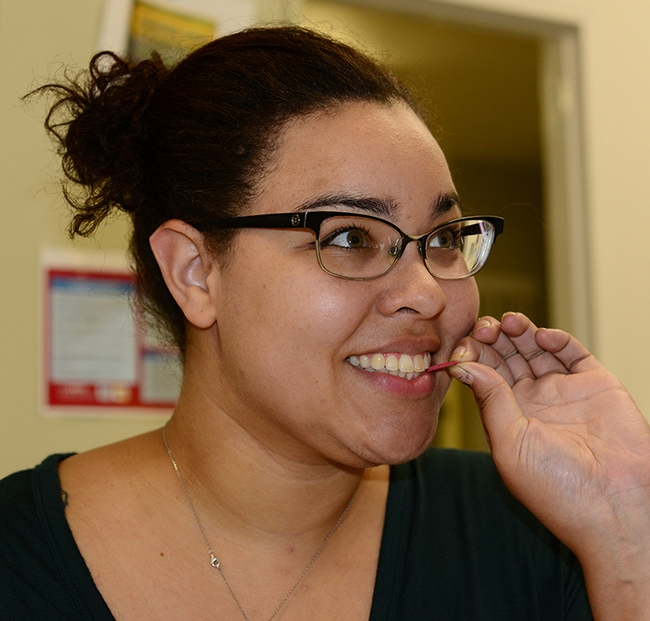- Author: Kathy Keatley Garvey
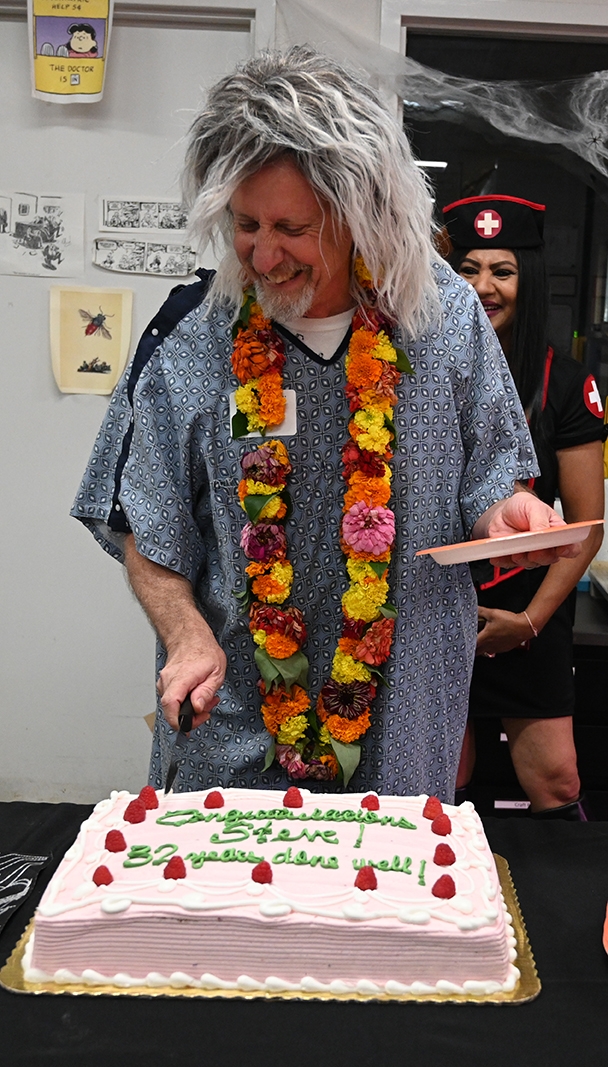
The event celebrated the retirement of senior museum scientist Steve Heydon, dressed as a nursing home patient who walked with the aid of a walker and his wife, Anita, dressed as a nurse. Heydon, a 32-year UC Davis employee who retired at the end of October (2022), cut a cake and handed out prank gifts to the Bohart Museum staff.
Forensic entomologist Robert Kimsey of the UC Davis Department of Entomology and Nematology, wore his traditional ghillie suit as he served refreshments.
Scott Ballinger, at a height of 6'7", towered over everyone as the "Tall Tree." Ballinger, who received his degree in computer science and engineering from UC Davis in June, partnered in costume with friend Grace Horne, a doctoral student in the laboratory of urban landscape entomology Emily Meineke, assistant professor.
UC Davis entomology student Max Arnold of the Bob Kimsey lab came as "The Red Guy," sporting a red wig the color of a California wildfire. Allen Chew dressed as an angel. Postdoctoral researcher Severyn Korneyev, a Ukrainian entomologist who studies flies at the Bohart Museum of Entomology and at the California Department Food and Agriculture, wore a batman costume. His name tag proclaimed "Batman."
Ellen Lange, UC Davis lecturer emerita of linguistics, arrived as Groucho Marx. Her husband, Professor Harry Lange (1912-2004) served as a faculty member of the UC Davis Department of Entomology, teaching agricultural and economic entomology courses.
Others came as themselves. They included Steve Nadler, professor and chair of the Department of Entomology and Nematology, Diane Ullman, professor and former chair of the department; Jeff Smith, curator of the Lepidoptera collection at the Bohart Musuem, and his wife, Kathy; and Bohart associate and naturalist Greg Kareofelas.
During the event, Lynn Kimsey, director of the Bohart Museum, and artists Francisco Basso and Brittany Kohler, unveiled two large-scale art projects of butterfly specimens in the hallway.
The guests also took turns swinging at a candy-filled pinata in the shape of 32, in a tribute to Heydon's years at UC Davis. Heydon will continue his research at an office in the Bohart.
The Bohart Museum, home of a global collection of eight million insect specimens, is located in Room 1124 of the Academic Surge Building, 455 Crocker Lane.

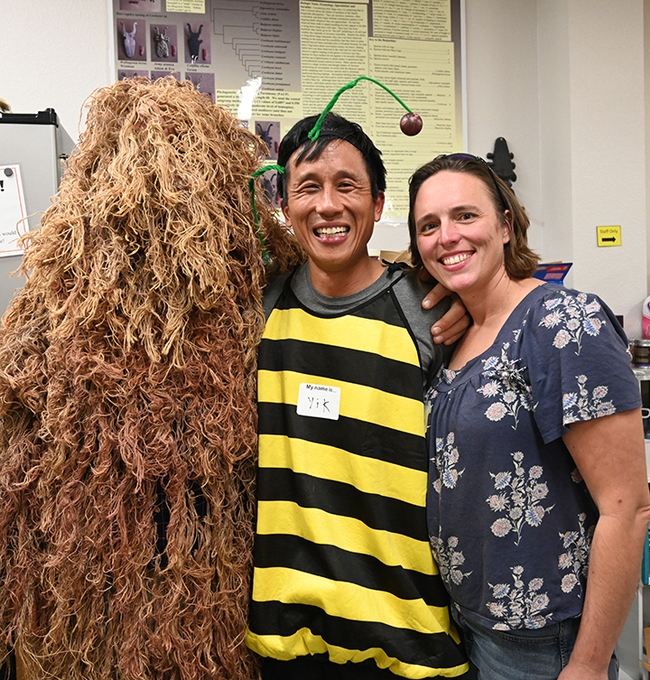
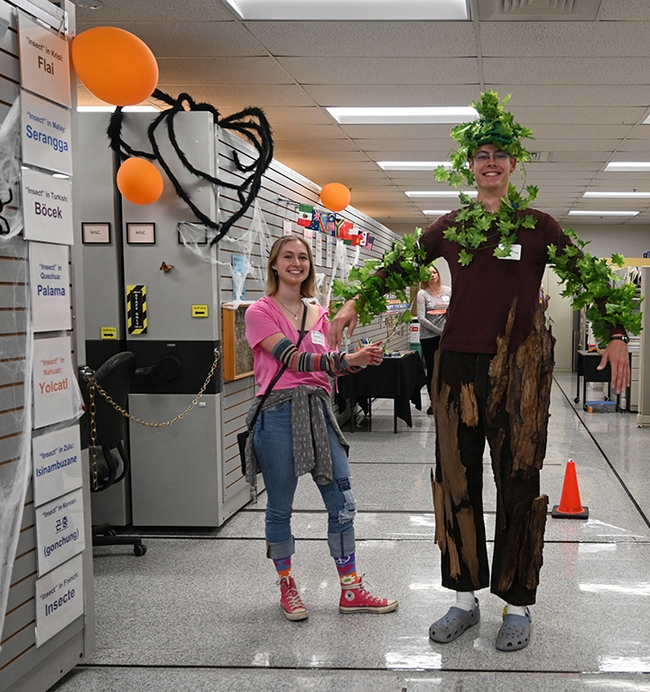
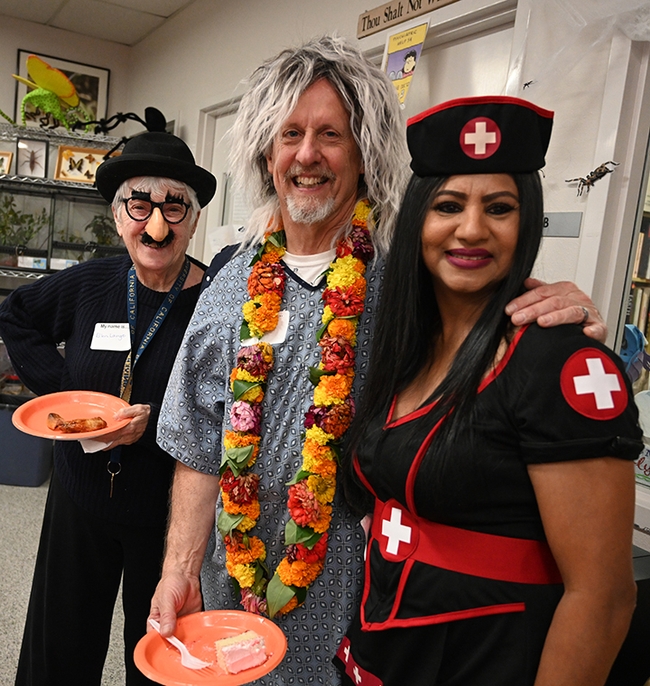
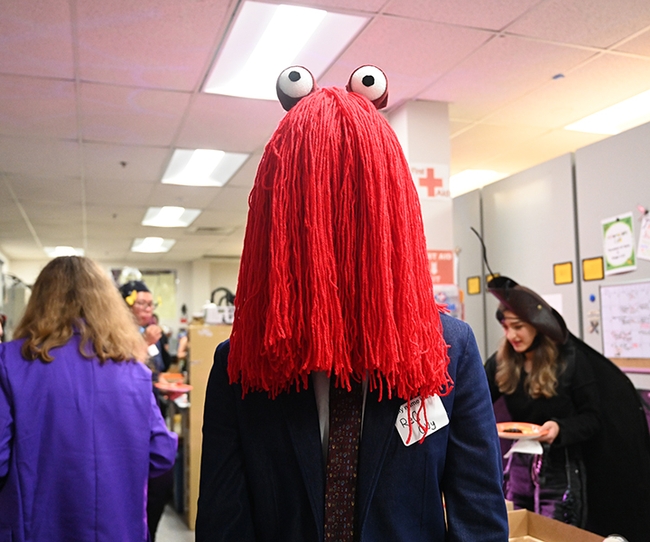
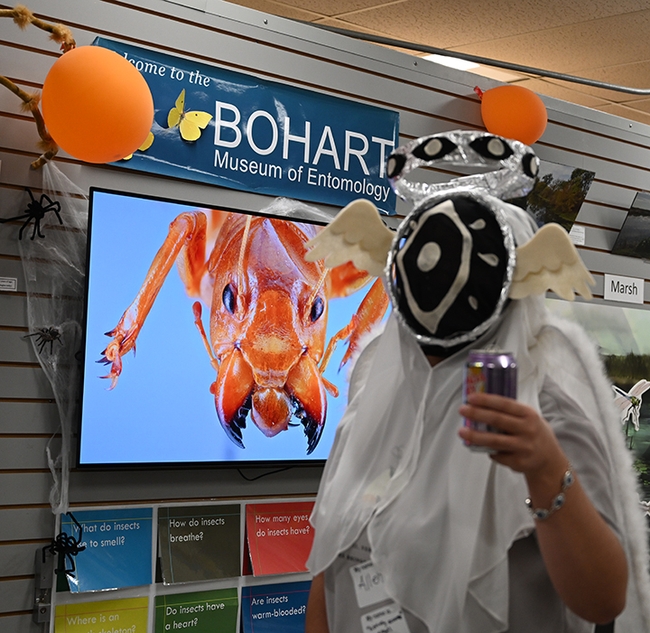
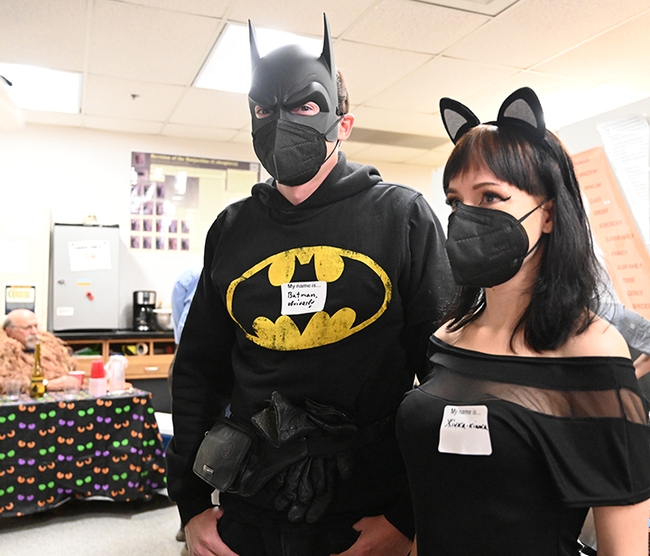
- Author: Kathy Keatley Garvey
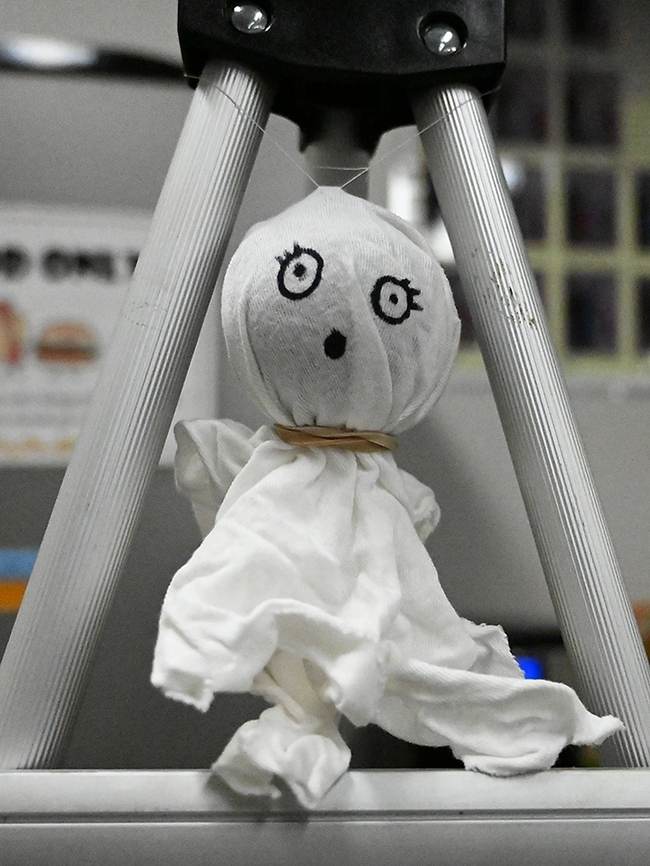
It was the first special event of the fall season.
Scientists answered questions about such wasps as the Asian giant hornet (aka "murder hornets"), pteromalids, and fig wasps and also fielded questions about other insects, including butterflies, moths, beetles, cockroaches, and Jerusalem crickets.
The Bohart Museum, directed by Lynn Kimsey, UC Davis distinguished professor of entomology, is located in Room 1124 of the Academic Surge Building, 455 Crocker Lane. It houses a global collection of eight million insect specimens. It also is home to a live “petting zoo,” comprised of Madagascar hissing cockroaches, stick insects and tarantulas; and an insect-themed gift shop, which includes t-shirts, sweatshirts, jewelry, books, posters and other items. The gift shop is open all year-around and is also online.
The Bohart Museum is open to the public Monday through Thursday, from 9 a.m. to noon and from 1 to 5 p.m., except holidays. (See schedule). More information is available on the website at https://bohart.ucdavis.edu or by contacting bmuseum@ucdavis.edu.
Upcoming special events, all free and family friendly:
Saturday, Oct. 15, 1 to 4 p.m.
Insects, Art & Culture
Visitors will learn about insects through the lenses of art and culture. This event is part of Spirit Week (Oct. 10-16) for Aggie students, parents and alumni, but all are welcome.
Saturday, Oct. 15, 11 a.m. to 11:50 a.m.
Special Talk: Plants, Insects and Art: Mary Foley Benson's Scientific Illustrations
Location: Teaching and Learning Complex (TLC) Building, 482 Hutchison Drive, UC Davis campus
This event is part of Spirit Week for Aggie students, parents and alumni, but all are welcome. Srdan Tunic, a candidate for a master's degree in art history and a Bohart associate, will be highlighting the scientific illustrations of Mary Foley Benson (1905-1992), formerly of the U. S. Department of Agriculture's Bureau of Entomology and the Smithsonian Institution and who later worked for UC Davis entomologists. Much of her work appears on campus. (See research story on the artist by Malcolm Furniss)
Sunday, Nov. 6, 1 to 4 p.m.
Dragonflies Rule!
Dragonflies are described as "the ultimate predator both in the water and the air." Visitors will meet scientists and natural historians who will share information on the world of dragonflies.
Several activities are featured on the daily (Monday through Friday) Bug Squad blog:
- How Do You Say 'Insect' in the Turkish Language?
- It Took Gall to Make a Ghost
- Learning About Wasps and Other Insects
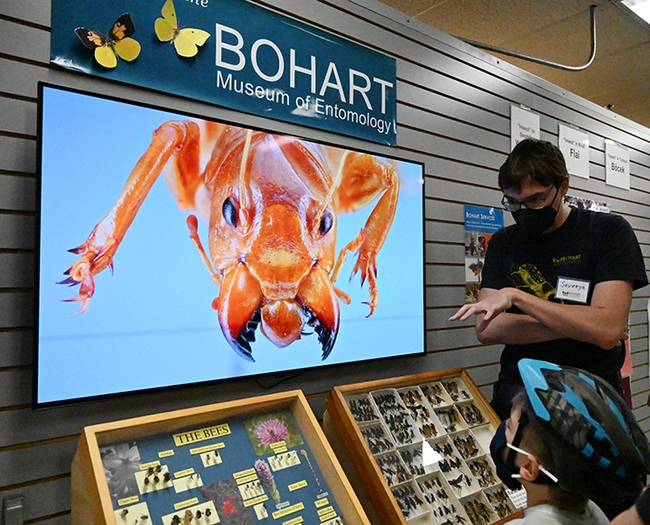
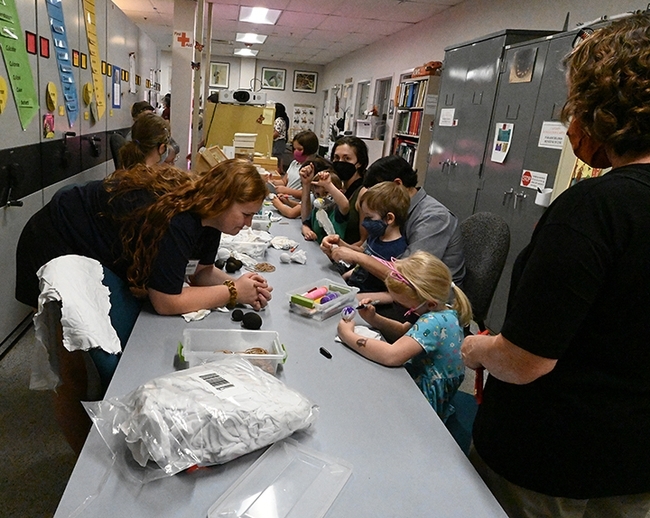
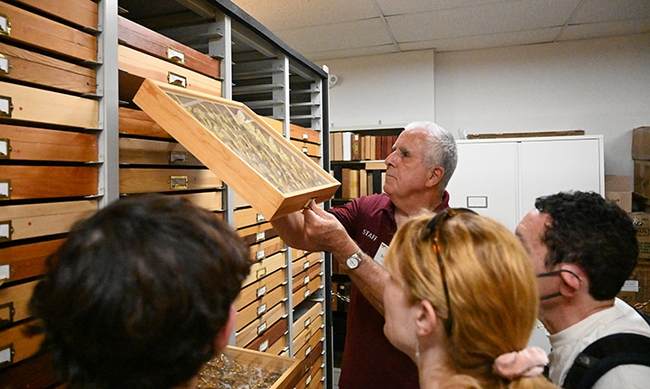
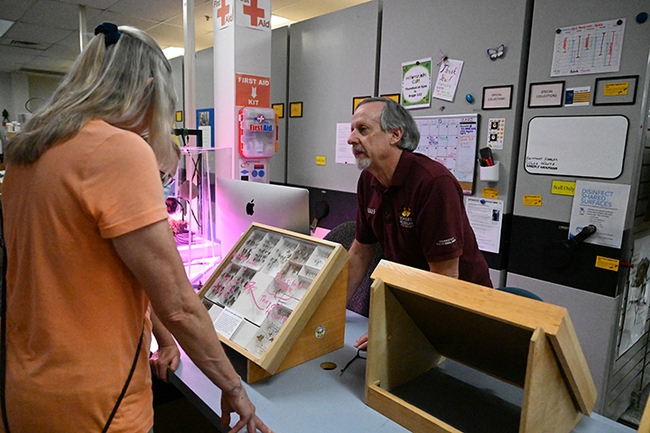
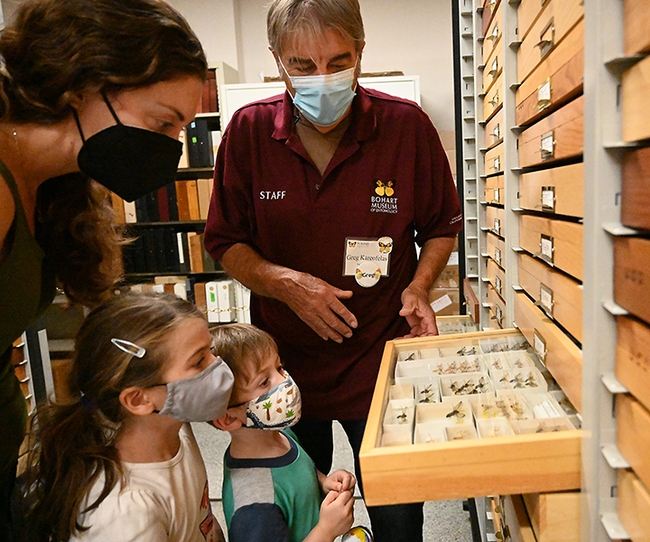
- Author: Kathy Keatley Garvey
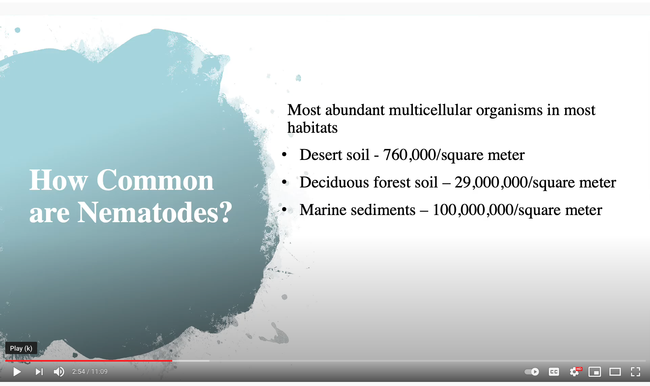
As of Feb. 11, the videos posted on this site for free, public viewing include:
- "All About Nematodes," an 11-minute YouTube video by Steve Nadler, professor and chair of the UC Davis Department of Entomology and Nematology." He explains what they are and discusses the diversity and research involved. See https://youtu.be/3fhv-P_O8I8.
- "Virtual Tour of the Bohart's Lepidoptera Collection," a 13-minute Aggie Video by Diane Ullman, professor and former chair of the UC Davis Department of Entomology and Nematology. She describes the natural history and ecology of several colorful and toxic species in the Bohart Museum of Entomology. See https://bit.ly/2LHYFzL
- "Insect Collection, Preservation and Identification," a 15-minute Aggie Video by Steve Heydon, senior museum scientist, Bohart Museum of Entomology. Heydon, the curator and collections manager of the Bohart Museum, gives an overview of how the museum collects, preserves and identifies some of its nearly 8 million specimens. See https://bit.ly/375eXdC
- "Common Millipedes of the Sacramento-San Francisco Region," a 23-minute YouTube video by Xavier Zahnle, a doctoral student in the lab of Professor Jason Bond lab, the Schlinger Chair in Systematics. Zahnle reviews the major groups of millipedes that are commonly found in the region, the diversity, and what makes them unique. See https://youtu.be/ZMAzm3A95VE
- "Demonstration of Insect Preparation: Butterflies and Moths," a 9-minute Aggie Video featuring Jeff Smith, curator of the Lepidoptera collection at the Bohart Museum of Entomology. He describes how to pin and spread moths and butterflies. This technique is the most common method that museums and researchers use to display adult Lepidopterans, allowing scientists to identify and study this diverse group of insects. See https://video.ucdavis.edu/media/0_9nymgt3c
- "All About Arachnids," a 24-minute YouTube video by Lacie Newton, a doctoral student in the lab of Professor Jason Bond lab, the Schlinger Chair in Systematics. She talks about the diversity of arachnids (spiders, scorpions, ticks, mites etc.) and their unique characteristics. https://youtu.be/FM_ANqARkI0
Other topics range from the Phaff Yeast Collection, California Raptor Center and the Museum of Wildlife and Fish Biology to the UC Davis Arboretum and Public Garden. More videos, including one on the diversity of bees by Chris Casey, manager of the UC Davis Department of Entomology and Nematology's bee garden, the Häagen-Dazs Honey Bee Haven, are being loaded throughout the month of February. To access all of the pre-recorded videos and activities, click here. To access the schedule of live talks and demonstrations, click here.
About the UC Davis Biodiversity Museum Month
The 10th annual UC Davis Biodiversity Museum Month program is all virtual this year via webinars and pre-recorded presentations. All take place throughout the month of February. The science-based event traditionally occurs on only one day--the Saturday of Presidents' Weekend, when families and friends gather on campus to learn first-hand about the UC Davis museums and collections.
This year's biodiversity event focuses on 12 museums or collections:
- Anthropology Museum
- Arboretum and Public Garden
- Bohart Museum of Entomology
- Botanical Conservatory
- California Raptor Center
- Center for Plant Diversity
- Häagen-Dazs Honey Bee Haven
- Nematode Collection
- Marine Invertebrate Collection
- Museum of Wildlife and Fish Biology
- Paleontology Collection
- Phaff Yeast Culture Collection
One of the activities listed in the pre-recorded talks and activities is a 10-page coloring book on plant-insect interactions. It's the work of Molly Barber, Fernanda Guizar, Collin Gross and Jasen Liu of the Santiago Ramirez lab, UC Davis Department of Evolution and Ecology. Ramirez is a global authority on orchid bees. Download the PDF of the coloring book here.
To help support the Biodiversity Museum event, contributions are being accepted through a month-long crowdfunding campaign program at https://crowdfund.ucdavis.edu/project/24310.
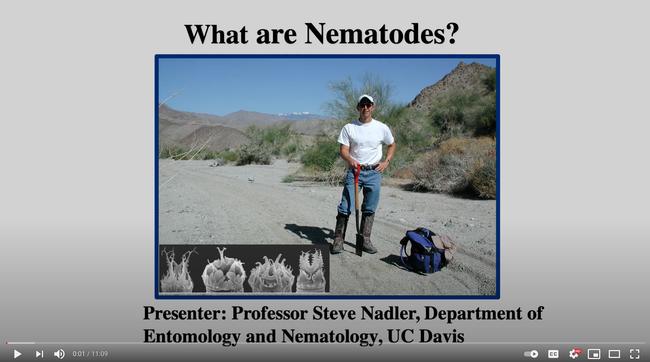
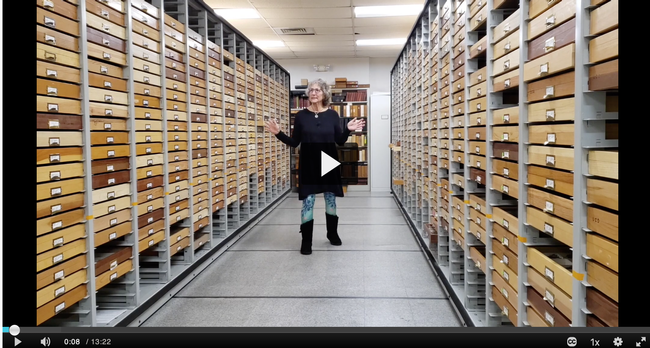
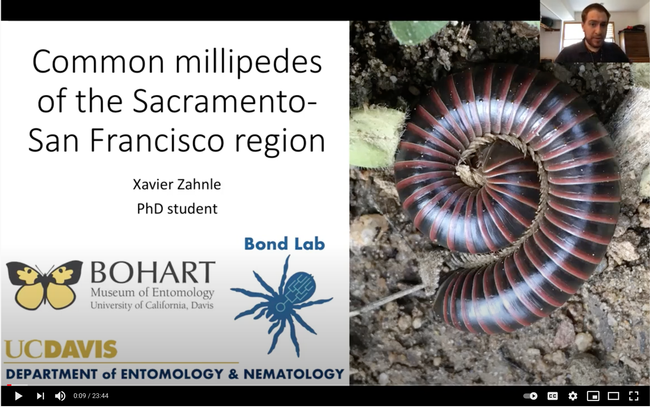
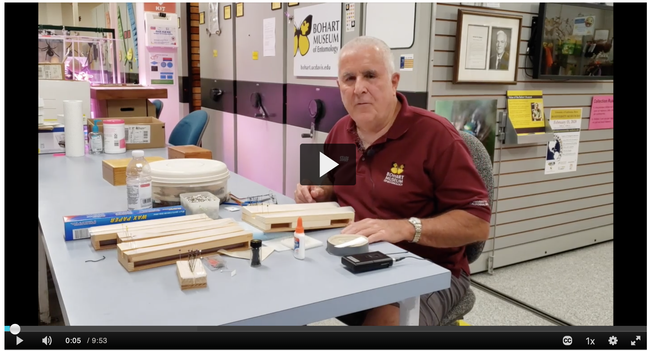
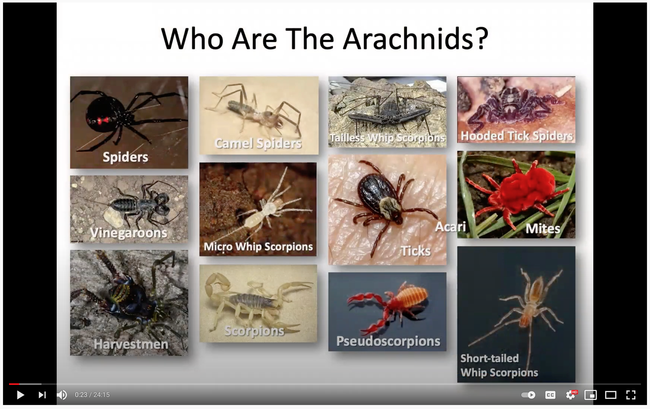
- Author: Kathy Keatley Garvey
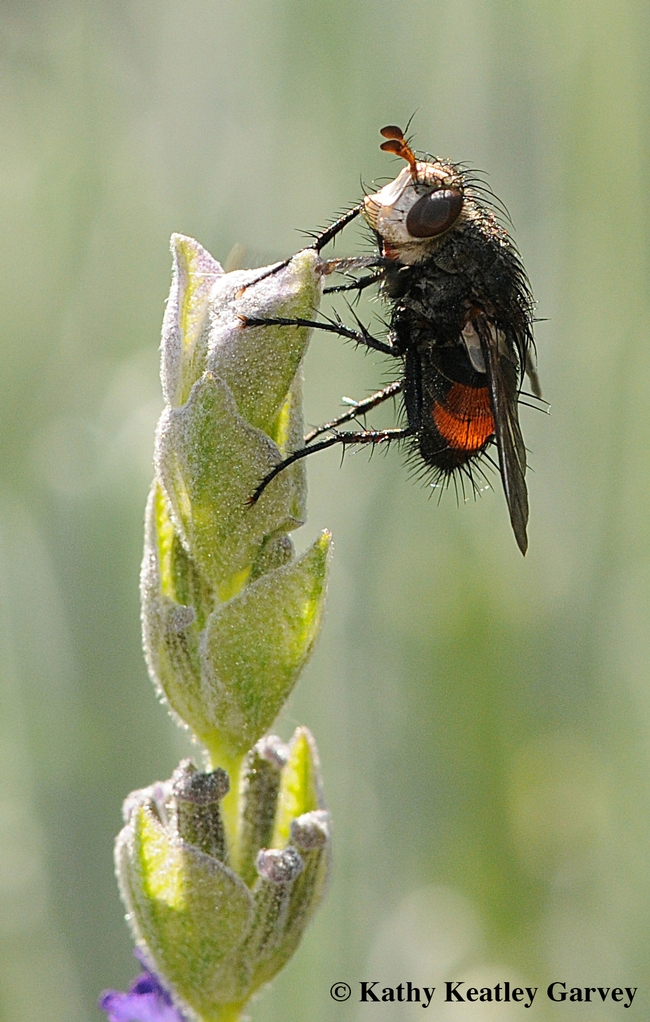
The Bohart Museum of Entomology is hosting its annual "Parasitoid Palooza" from 1 to 4 p.m., Saturday, Oct.19.
The event, free and family friendly, takes place in Room 1125 of the Academic Surge Building on Crocker Lane, UC Davis campus.
"An insect parasitoid is a species whose immatures live off of an insect host, often eating it from the inside out," said Tabatha Yang, education and outreach coordinator of the Bohart Museum. "It is part of their life cycle and the host generally dies."
Senior museum scientist Steve Heydon, who researches Pteromalids or jewel wasps, will present his work and answer questions. Graduate student Socrates Letana will also field parasite questions from the crowd.
There are some 3,450 described species of Pteromalids, found throughout the world and in virtually all habitats. Many are important as biological control agents.
Also planned at the open house:
- A family craft activity, to be announced
- Sampling of Chirp Chips, from the Bohart Museum's recent entomophagy open house
- Display of orange and black Harlequin beetles (just in time for Halloween) from Jasmin Ramirez Bonilla of the Ian Grettenberger lab, UC Davis Department of Entomology and Nematology
- Display of pumpkin-eating pests--cucumber beetles--which can be a pest on squashes, cucumbers and other members of the cucurbits family.
The Bohart Museum, directed by Lynn Kimsey, professor of entomology at UC Davis, houses a global collection of nearly eight million specimens. It is also the home of the seventh largest insect collection in North America, and the California Insect Survey, a storehouse of the insect biodiversity.
Special attractions include a “live” petting zoo, featuring Madagascar hissing cockroaches, walking sticks, praying mantids and tarantulas. Visitors are invited to hold some of the insects and photograph them. The museum's gift shop, open year around, includes T-shirts, sweatshirts, books, jewelry, posters, insect-collecting equipment and insect-themed candy.
The Bohart Museum holds special open houses throughout the academic year. Its regular hours are from 9 a.m. to noon and 1 to 5 p.m. Mondays through Thursdays. The museum is closed to the public on Fridays, Saturdays and Sundays and on major holidays. Admission is free.
More information on the Bohart Museum is available by contacting (530) 752-0493 or emailing bmuseum@ucdavis.edu or Tabatha Yang at tabyang@ucdavis.edu.
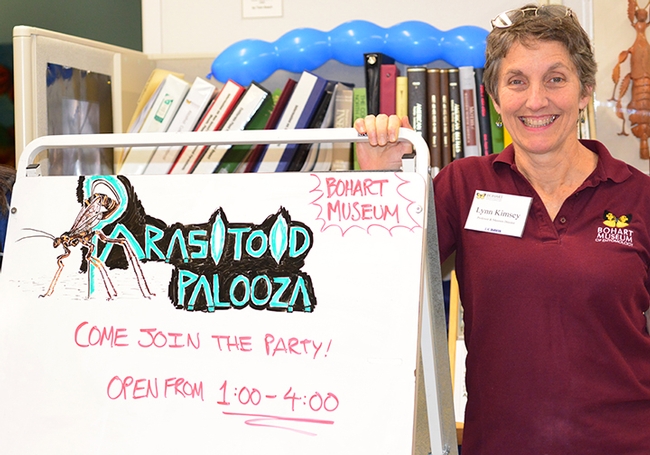
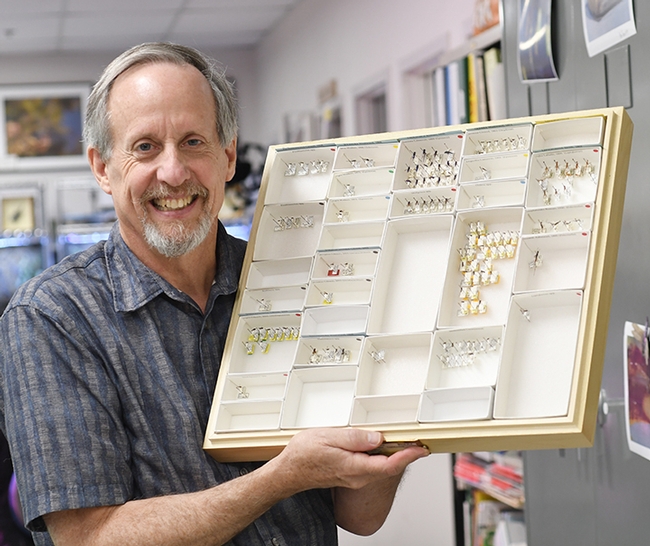
- Author: Kathy Keatley Garvey
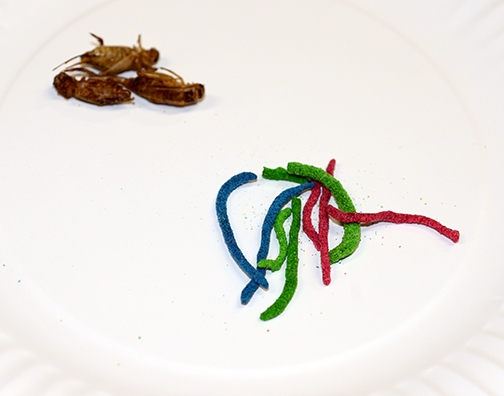
Ever tasted a cricket? A mealworm? An earthworm?
You can if you attend the Bohart Museum of Entomology open house themed "Gobble, Gobble, Munch, Munch, Crunch: Entomophagy,” to be held from 1 to 4 p.m., Saturday, Sept. 21 in Room 1124 of the Academic Surge Building on Crocker Lane.
Open to the public, it's free and family friendly, said Lynn Kimsey, director of the Bohart Museum and professor of entomology at UC Davis.
“The theme is entomophagy and we have some samples from various companies coming our way,” said Tabatha Yang, education and outreach coordinator. Companies providing samples include Hotlix, Exo and Chirps Chips.
Said Kimsey: "Many insects are quite edible and if you try them you might find that crickets are the new shrimp. Personally, I like flavored mealworms."
"Just think of insects as terrestrial shrimp or crab," said senior museum scientist Steve Heydon.
The event will include learning about entomophagy, sampling insect-based foods, button-making (“I ate a bug at the Bohart”), viewing the collection, and handling insects from the petting zoo, which includes Madagascar hissing cockroaches, stick insects and tarantulas. Yang and Bohart associate Emma Cluff recently completed an online training for food handling, as required by UC Davis.
In preparation for the event, Bohart Museum volunteer Iris Bright, a second-year biology major at Sacramento City College, sampled crickets, mealworms and earthworms last week.
Bright liked them all. “They're good,” she said, as she tasted red, green and blue earthworms. She described them as having "a sweet and sour taste." The mealworms? “Somewhat cheesy.”
“The crickets are crunchy," she said, adding "I've had them before.”
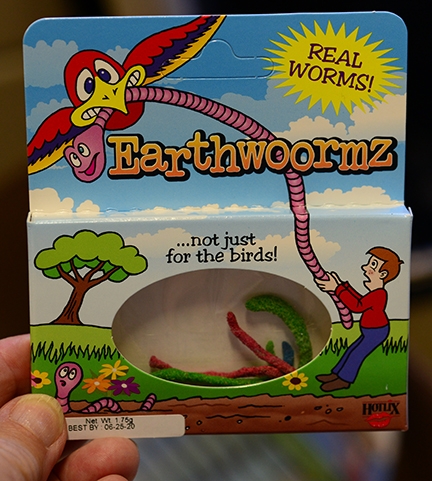
Eighty percent of the world population, including those living in Central and South America, Africa, Asia, Australia, and New Zealand, consume insects as a high protein source. Some 1700 species of insects are edible.
The Food and Agriculture Organization of the United Nations (FAO) has registered some 1,900 edible insect species and estimates that there were, in 2005, some two billion insect consumers worldwide. FAO suggests eating insects as a possible solution to environmental degradation caused by livestock production. Insects and arachnids eaten globally include crickets, cicadas, grasshoppers, ants, various beetle grubs (such as mealworms, the larvae of the darkling beetle, various species of caterpillars (such as bamboo worms, Mopani worms, silkworms and waxworms), scorpions and tarantulas, according to Wikipedia.
Spencer Michels in a PBS News Hour report in May 2017, commented: “But the big advantage of eating insects is that they are generally healthier than meat. A six-ounce serving of crickets has 60 percent less saturated fat and twice as much vitamin B-12 than the same amount of ground beef. ..Bugs also don't spread disease to humans the way cows — think mad cow disease– or pigs can.”
“I do realize that insects do have a bad rap,” California Academy of Sciences entomologist Brian Fisher recently said. “Most people see insects are pests or as dangerous. But it's just the opposite. Insects are less dangerous and less of a problem for humans in terms of disease."
“We do have concerns about disease jumping from animals like pigs and cows to humans,” Fisher said. “But there are no worries about a disease jumping from an insect to humans. The more evolutionary distant we are from our food source, the less danger there is. … There is almost zero chance that any disease that affects an insect could actually impact a human after it's cooked.”
Celebrity bug chef David George Gordon, author of the “Eat-a-Bug” cookbook, extolled the virtues of the “bugs as food” movement when he addressed a UC Davis audience in 2014 at the Robert Mondavi Institute for Wine and Food Science. Insects are an environmentally friendly source of protein, he said, and bug farming reduces greenhouse gas emissions and is exponentially more water-efficient than farming for beef, chicken, or pigs.
The Bohart Museum houses a global collection of nearly eight million specimens. It is also the home of the seventh largest insect collection in North America, and the California Insect Survey, a storehouse of the insect biodiversity. Noted entomologist Richard M. Bohart (1913-2007) founded the museum. It maintains a live "petting zoo," featuring Madagascar hissing cockroaches, walking sticks or stick insects, tarantulas, and praying mantids. The museum's gift shop, open year around, includes T-shirts, sweatshirts, books, jewelry, posters, insect-collecting equipment and insect-themed candy.
The museum is open to the public Mondays through Thursdays from 9 a.m. to noon and 1 to 5 p.m., except on holidays. More information on the Bohart Museum is available on the website at http://bohart.ucdavis.edu or by contacting (530) 752-0493 or bmuseum@ucdavis.edu. (See list of open houses for the 2019-2020 academic year.)
